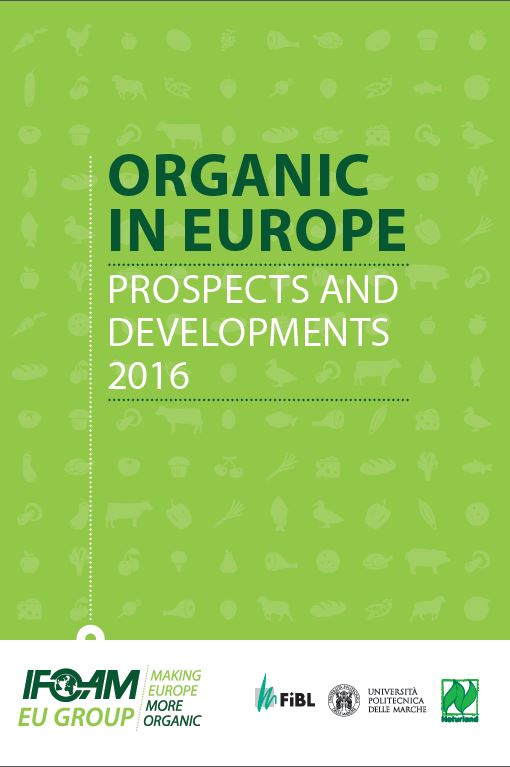The growth trends highlight the importance of using the Common Agricultural Policy (CAP) and other agri-food policies to create a more positive environment in which farmers and food companies feel confident making significant investment decisions. Without these investments, Europe will not be able to meet the growing demand amongst EU consumers for organic food. In mapping the latest trends across Europe, the research shows that in the EU alone the organic market grew at a relatively high rate of 7.4% in 2014 and retail sales valued at €24 billion. However, the increase in organic farmland area in the EU slowed – growing by just 1.1% and the number of producers actually fell by 0.2%.
Reflecting on the current imbalances in organic supply and demand in Europe and how such gaps should be closed, the authors describe the need for clear organic sector strategies to be developed, for support to be given to shorter organic supply chains and for the accuracy of organic market data collection to be improved. Policy makers at European, national and regional levels all have a role to play in creating this environment. The publication was developed in partnership with researchers from the Research Institute of Organic Agriculture FiBL, Marche Polytechnic University and the German organic farmers association Naturland. It looks at the latest market and production developments across Europe in context of the new CAP and current EU agri-food policy, including:
- A think-piece on expanding organics beyond a niche, taking the latest trends and the European organic movement’s vision to increase the area of Europe’s agricultural land under organic management by 50% by 2030 into account.
- Facts and figures provided by the Research Institute of Organic Agriculture (FiBL) on latest farming and market trends across Europe with special focus on the 28 Member States of the European Union, EU Candidate and Potential Candidate countries, and the members of the European Free Trade Association.
"Organic in Europe: Prospects and Developments 2016" and accompanying interactive infographics can be downloaded and explored below. These publications are part of the "Boosting organic: making the CAP effective" project, an action cofinanced by the European Commission, Directorate General for Agriculture and Rural Development.
Further information
Links
- ifoam-eu.org: Download of "Organic in Europe: Prospects and Developments 2016"
- ifoam-eu.org: Interactive infographics

 tap and then scroll down to the Add to Home Screen command.
tap and then scroll down to the Add to Home Screen command.